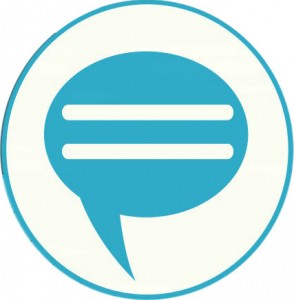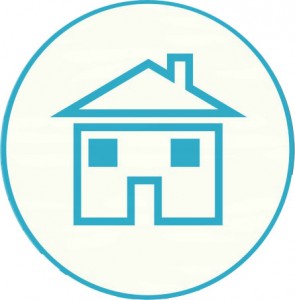How the Internet Helps in a Crisis
Everyone has heard about the recent Paris Attacks on November 13th. Many people have found that the Internet helps in a crisis. The Internet can help to coordinate relief efforts while providing essential communication services to the unfortunate individuals involved in a disaster.
Google Crisis
![]() Google has created some powerful tools to help save the day in times of crisis.
Google has created some powerful tools to help save the day in times of crisis.
Crisis Response – Because Google’s crisis response team analyzes each crisis, each response may be slightly different.
A specific response may include:
- Creating a Resource Page – This is a simple web page containing the most relevant emergency information and tools available for a given crisis.
- Launching Google Person Finder – This is an application which connects friends and loved ones following a disaster. This is useful when there is a large number of missing people and traditional communication lines are unavailable.
- How it works: Google’s Person Finder page lists current disasters. Click on a disaster and you can then choose from either “I’m looking for someone” or “I have information about someone”.

- How it works: Google’s Person Finder page lists current disasters. Click on a disaster and you can then choose from either “I’m looking for someone” or “I have information about someone”.
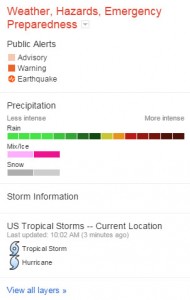 Hosting a Crisis Map – This is a map that displays information concerning the disaster such as storm paths, flood zones, evacuation routes, shelter locations, and power outages. This includes official content and user-generated content.
Hosting a Crisis Map – This is a map that displays information concerning the disaster such as storm paths, flood zones, evacuation routes, shelter locations, and power outages. This includes official content and user-generated content.
Tools For Responders – Do you think your organization may be able to help in a disaster? Google also provides some tools for responders.
- Google Public Alerts – An organization can send emergency alerts if they are relevant to an ongoing crisis. These alerts will appear on Google’s search results, maps, and android devices (using Google Now).
- Person Finder – This can be embedded into your company’s website.
- Crisis Map – This can be embedded in your company’s website.
- Other Google Tools – Docs, spreadsheets, and Earth are all useful tools for responders.
Facebook Safety Check Tool
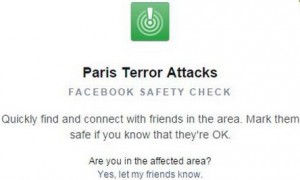 The Facebook Safety Check Tool was originally created for natural disasters. After the Paris Attacks, it has opened up to man made disasters as well. Basically, the Safety Check tool notifies friends and loved ones that you’re safe during a disaster.
The Facebook Safety Check Tool was originally created for natural disasters. After the Paris Attacks, it has opened up to man made disasters as well. Basically, the Safety Check tool notifies friends and loved ones that you’re safe during a disaster.
This was original inspired by the 2011 Tohoku earthquake and tsunami and was then released on October 15th, 2014.
How It Works:
- Affected Area Notification – Facebook sends you a notification if you are in an affected area and asks if you are safe.
- “I’m Safe” –
 After receiving the notification, if you click or tap “I’m Safe” it adds a green “I’m Safe” box next to your name so others can see your status. Other friends may also confirm whether or not you are safe.
After receiving the notification, if you click or tap “I’m Safe” it adds a green “I’m Safe” box next to your name so others can see your status. Other friends may also confirm whether or not you are safe. - Safe Friends Notification – After the tool has been activated you will then receive notifications when your friends have marked themselves as safe.
 Ways Facebook responded to Paris Attacks:
Ways Facebook responded to Paris Attacks:
- Enabled their safety check
- Created a profile picture filter of blue, white, and red
Twitter Alerts
 What? This is an alert that contains vital real-time information during a fast moving emergency. Since this feature is intended for crisis, disaster, and emergency communications, these alerts consist of:
What? This is an alert that contains vital real-time information during a fast moving emergency. Since this feature is intended for crisis, disaster, and emergency communications, these alerts consist of:
- Warnings of imminent dangers
- Preventive instructions
- Evacuation directions
- Urgent safety alerts
- Information on access to essential resources
- Information on critical transit and utility outages
- Crowd and misinformation management.
- Who? Only these groups are authorized to send an alert:
- Law enforcement
- Public safety agencies
- Emergency management agencies
- City and municipal governments
- County and regional agencies
- Select state, federal, and nation agencies and NGOs
- When? Twitter Alerts are used when traditional ways of communication are not available. Such emergencies may include:
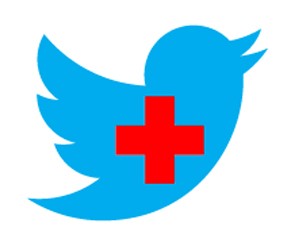 Natural disasters
Natural disasters- Severe weather
- Biological incidents
- Chemical or hazardous materials emergencies
- Nuclear
- Radiological incidents
- Explosions
- Food and agricultural incidents
- Cyber incidents
- Terrorism incidents
- Crime
- Major transportation incidents
- Where? Twitter Alerts send as SMS notifications. Also, an orange bell displays next to alerts on your timeline.
Think your organization qualifies? Complete the Twitter Alert Enrollment Form
How do I get Twitter alerts? Twitter Alert Setup
Ways Twitter responded to Paris Attacks:
- Use of hastags
- #PorteOuverte – Translates to Open Doors. This means you need a safe place to stay or you have a safe place (with open doors).
- #PrayForParis – Used to show support for Paris
- #RechercheParis – Translates to Search Paris. Friends and loved ones used this to find each other.
Airbnb Disaster Relief Program
 As a result of Hurricane Sandy in October 2012, many people in New York opened their doors to stranded individuals.
As a result of Hurricane Sandy in October 2012, many people in New York opened their doors to stranded individuals.
Airbnb, the unique online rental listing company, wanted to do the same during a disaster. They eventually created their very own disaster relief program. Airbnb even partnered with local government agencies and disaster relief organizations to make this program as effective as possible.
How it works Airbnb first sends out emails to room hosts in affected areas asking if they are in a position help. Hosts may then choose whether or not to participate. Finally, participating hosts open their doors (for free) to help people affected by the disaster.
- Airbnb still offers 12/7 customer support, trust & safety tools, host guarantee and all other services.
- Airbnb also uses their network to provide disaster information to the guests and hosts.
Ways Airbnb responded to Paris Attacks:
- Activated their disaster relief program and many hosts in the affected areas opened their doors to help keep people safe.
Other companies that helped during the crisis
Uber – Turned off their city price surge.
Verzion, T-Mobile, Sprint, AT&T, Google, and Skype – Made calling and texts from United States to France available for free
Why Businesses Should Be On Social Media
Social Media is Valuable to Businesses
So you already have a website. Do you need to bother with social media? The answer is yes, and the obvious reason is that it makes your business easier to find. But there’s more to it than that! Read on for why businesses should be on social media platforms like Twitter, Facebook, and Google Plus.
Closer and More Personal Relationships With Customers
People like to feel important and they want to be heard. By using social media you have a major advantage in knowing what your customer wants, what they like, and how they speak.
And you are in an optimal position to speak back to your customers and engage in dialogue. You are not selling something as much as participating in an interactive community. This kind of interaction makes your company feel more human.
Instant Feedback – And Damage Control
 If someone is unhappy with a product or service, these days they often bring their experience straight to the internet, in a public and vocal way.
If someone is unhappy with a product or service, these days they often bring their experience straight to the internet, in a public and vocal way.
This puts the spotlight on you to respond, and is your opportunity to turn lemons into lemonade. If someone is complaining, it’s because they want to be heard. Your properly-handled response to complaints can create dedicated followers and loyal customers.
Just remember not to be emotional or hostile when you respond to criticism – all eyes are on you to see what you do!
Learn About Your Customers & Expand Your Audience
When you get feedback from your customers you are gaining valuable data: their opinions, their preferences, what drives them, and how they operate.
This information is valuable, in that it gives you a greater opportunity to expand your audience and find more customers.
Create Interest and Awareness – For Less Cost Than Traditional Media
If a potential customer doesn’t know you offer a particular good or service, they won’t think to go to you. If they see what you have to offer even when that is not something they’re searching for at this exact time, you’ve still made them aware of it. Because of that, when they do need what you offer, they know you’re an option.
Creating awareness and interest through social media does take time. But it costs significantly less than traditional media. That’s not to say you should give up on traditional media, but at the very least social media is a worthy supplement.
Share Your Content & Bring People Back to Your Website
Do you have blog articles, photos, imagery of your services on your site? Social media is a great way to get that info out for people to see. It’s also a great way to bring people back to your website.
Your website should be the hub of your internet presence that users can come back to for all things about your company. Social media is a great supplement. It allows for personal interaction, draws people to your website, and helps create conversation about your business. Take a look for more obscure social media outlets as well. Platforms like Tumblr, Alignable, Instagram and even Ello may have something to offer.
If you need help setting up your web presence, contact us at Appletree MediaWorks – we can give you a hand.
Social Media Content Rights
 Who Owns Rights To Your Social Media Content?
Who Owns Rights To Your Social Media Content?
Occasionally we see those posts on Facebook where a user declares that they don’t have to abide by Facebook’s terms of service, having written a clause in a post. We all know this is a hoax. After all, you already agreed to their terms by making an account.
Even so, what is the nature of your media on someone else’s social media network? What are your social media content rights? It varies, and it’s murky.
Facebook:
 Facebook’s terms are broad. Since their (and your) materials are hosted on various servers, their terms are written so that the data can be shared as desired or needed by them. According to Scoopshot, this does not end when you delete your account either. Your images may be hosted on one of their servers elsewhere.
Facebook’s terms are broad. Since their (and your) materials are hosted on various servers, their terms are written so that the data can be shared as desired or needed by them. According to Scoopshot, this does not end when you delete your account either. Your images may be hosted on one of their servers elsewhere.
Facebook says they have no intention of using these images for their own purposes, selling them, or otherwise distributing them. However, their legal terms are written so that they can.
Read Facebook’s Terms of Service
Don’t like it? Don’t host or post your media there.
Twitter:
 Media you post on Twitter stays yours, says Twitter, but their terms specify that they can distribute the materials posted through them. Again, their terms are open-ended.
Media you post on Twitter stays yours, says Twitter, but their terms specify that they can distribute the materials posted through them. Again, their terms are open-ended.
Twitter’s Terms of Service state “By submitting, posting or displaying Content on or through the Services, you grant us a worldwide, non-exclusive, royalty-free license (with the right to sublicense) to use, copy, reproduce, process, adapt, modify, publish, transmit, display and distribute such Content in any and all media or distribution methods (now known or later developed).”
Instagram:
 Your material belongs to you on Instagram, with the usual warnings about network sharing. They can display those images as they see fit. You are also responsible for not hosting copyright materials belonging to someone else.
Your material belongs to you on Instagram, with the usual warnings about network sharing. They can display those images as they see fit. You are also responsible for not hosting copyright materials belonging to someone else.
The terms of service for Instagram state “you hereby grant to Instagram a non-exclusive, fully paid and royalty-free, transferable, sub-licensable, worldwide license to use the Content that you post on or through the Service, subject to the Service’s Privacy Policy, available here including but not limited to Sections 3 (“Sharing of Your Information”), 4 (“How We Store Your Information”), and 5 (“Your Choices About Your Information”).”
Flickr:
 Flickr is owned by Yahoo, and there has been a lot of fuss over who owns those images. Currently, Flickr claims that you own the rights to your images in their social media network.
Flickr is owned by Yahoo, and there has been a lot of fuss over who owns those images. Currently, Flickr claims that you own the rights to your images in their social media network.
Other social media networks state that you own your media with the usual server/host limitations. They also assume that you are acknowledging that you own the materials you upload.
Ultimately, social media networks are going to cover all their bases for the foreseeable future, and make sure they are covered legally. This generally means they will broadly define their own rights. The result may be that they are allowed rights to your media. Your option, then, is to think carefully about where you are posting your media.
What is Ello?
Ello?
Much of the tech or social-media sided web has discussed Ello. These conversations frequently come in the same breath as something disparaging about Facebook, which gives indicator that it is presumably, a competitor. But just what is Ello, and is it going to live up to the hype! Read on for some answers, and some noncommittal predictions.
The New Kid
To begin with, the obvious: Ello is a new social media platform. If Facebook and Twitter had a child, and that new-kid artsy hipster child was just a little too cool to hang out with Tumblr with its weird (and occasionally questionable) hobbies, and found G+ – product of influential parents – to be absurdly outgoing and trying way too hard? That might be Ello.
But Why?
Originally created by a group of designers and developers to be a private social network, Ello strives to be different right off the bat. And in a world of multiple social media platforms, it needs to. Ello caters to users who are burned out on Facebook’s unilateral decisions and catering to advertising, and to users who are disenfranchised with the notion of being a data-gathering product of Facebook. Ello’s big boast is that it does not collect and sell your data to advertisers, and never will. Instead, Ello claims that it will have special features which users can purchase if they want, and that is how the company intends to fund the platform. Will that be enough to support the massive number of invite-only users trying out the platform? Comments sections the internet over are on fire over this question.
The Platform
Visually, Ello is stark, and fairly easy to figure out because it is designed to be simple. White background, with blacks and grays – it looks the part of extreme minimalism and a courier –style typeface. You can customize your page and add a little color by giving yourself a header image, not unlike Twitter, and adding an avatar.
Adding friends is a little like following people on Twitter, and you can type @users to address someone in particular. The Omnibox is your basic post-box, people have the ability to comment, and you can upload media. There is no ‘like’ button, but Ello states that in the near future it will have a ‘Love’ button.
You have two options for following people – Friends, or Noise. Noise is @ello, and populated by photographers, designers and graphic artists at this time. Much like Tumblr, Ello is set up to accept animated GIFs and may find itself rapidly integrating with the same sorts of users that populate the more visual social media platforms. Friends, on the other hand, is the wall where you view people you have friended and the things that they post.
Beyond this, the ‘Discover’ area is where you get a search bar which, at this point, seems about clunky and less useful than it could be. Ello’s feature list promises to improve this, along with the addition of an emoji index, user blocking, audio integration, multimedia commenting, and mobile apps.
But will it last?
This remains to be seen. A number of social media platforms have popped up only to burn out rapidly through the years, and Ello’s pride is also its disadvantage: with no income from advertisers, the question on whether it could handle long term widespread popularity has been debated extensively. It could be a momentary fad, getting attention from people that want desperately to escape Facebook and its games only to die shortly after, it could fall into a particular niche audience, or perhaps it will prove to be a true alternative.
Time will tell, and Ello has time. The platform is still in beta, and still invite-only. It’s definitely worth watching.





